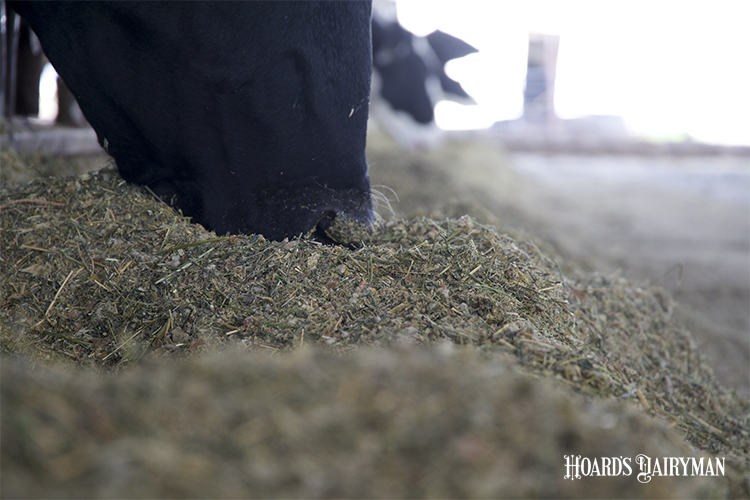
Do you feel overwhelmed by the amount of information provided by your forage analysis report? Interpreting these reports can be complex and tedious. Even more, farmers might question whether they need all those indicators . . . and they might be right about that. From my experience, there are three major uses of forage analysis reports. These are ration formulation, pricing of forages, and benchmarking.
Details for the diet
There are at least three critical pieces of information needed when formulating a ration: the requirements of the animal to be fed, the nutrients supplied by the ingredients, and the interactions between different nutrients or ingredients. Under this scope, most of the parameters obtained in a forage analysis report are used by nutritionists to formulate rations.
For example, the concentrations of insoluble crude protein recovered in fiber analyses (neutral detergent or acid detergent, NDICP or ADICP) are utilized by the ration formulation software to determine the supply of metabolizable protein of the ration. Similarly, the digestion rate of fiber (kd) and the proportion of undegraded fiber (also known as uNDF) are used by the ration formulation software to determine the supply of energy of the ration. So, more than anything else, a lot of the information from a forage analysis report is for inputting into a computer software.
Quality evaluations
Different to ration formulation, a few parameters are needed when pricing forages, and the number of variables will depend on the type of forage to be priced. For example, the Hay Quality Designation Guidelines from USDA use only a few quality parameters to classify alfalfa hay, and these are the concentrations of neutral detergent fiber (NDF), acid detergent fiber (ADF), and crude protein (CP). Then, a relative forage value (RFV) can be estimated from NDF and ADF. Even more simplistic, the Hay Quality Designation Guidelines use only the concentration of CP to classify grass hay.
In the case of corn silage, the concentration of starch and the corn silage processing score might be used as additional parameters to determine forage price. The bottom line is that forage analysis reports could be much simpler than they are if the goal is just to price forages.
Finally, benchmarking is another use of forage analysis. In this regard, forages can be compared between farms or within farms. To me, the latter is quite relevant to evaluate the evolution of the pre- and post-harvesting practices over the years. In this regard, there are certain useful parameters, such as the forage pH or the concentrations of lactic acid, acetic acid, or ethanol, that describe the fermentation characteristics of the forage (in this case, silage).
In summary, different uses can be given to forage analysis reports. One certain thing is that nutritionists need forage analysis reports to formulate the most appropriate diets to meet the demands of the herd while ensuring the sustainability of the farm. Therefore, do not feel intimidated by the overwhelming information of a forage analysis report, and do not hesitate to analyze your forages.








